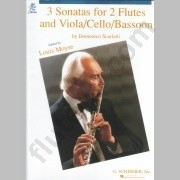Flute, 1 Wind, 1 String
-
Bach, CPE :: Zehn Kleine Trios [Ten Little Trios]
Zimmermann presents 10 Kleine Trios aus Wotquenne-Verzeichnis 82 und 193 [10 Little Trios from Wq 82 and 193] for two flutes and violin by CPE Bach.
With a variety of key signatures, meters, and ornamentation, these ten short trios are appropriate chamber music pieces for intermediate flutists. Due to their short length, individual pieces may be performed separately or as a group.
-
Berlioz, H :: Trio
Trio
Berlioz, H
Trio of the Young Ishmaelites from the Oratorio 'L'enfance du Christ' op. 25 [The Childhood of Christ] -
Berlioz, H :: Trio of the Young Ishmaelites from L'enfance du Christ op. 25
Trio of the Young Ishmaelites from L'enfance du Christ op. 25
Berlioz, H
International Music Company presents 'Trio of the Young Ishmaelites' from the Oratorio 'The Childhood of Christ' op. 25 by Hector Berlioz, arranged and edited for two flutes (or one flute, one oboe) and harp (or piano) by Robert Stallman.
L'enfance du Christ (The Childhood of Christ), Opus 25, is an oratorio by the French composer Hector Berlioz, based on the Holy Family's flight into Egypt (see Gospel of Matthew 2:13). Berlioz wrote his own words for the piece. Most of it was composed in 1853 and 1854, but it also incorporates an earlier work, 'La fuite en Egypte' (1850). It was first performed at the Salle Herz, Paris on 10 December 1854, with Berlioz conducting and soloists from the Opera-Comique. Berlioz described L'enfance as a 'Trilogie sacree' (sacred trilogy). The first of its three sections depicts King Herod ordering the massacre of all newborn children in Judaea; the second shows the Holy Family of Mary, Joseph, and Jesus setting out for Egypt to avoid the slaughter, having been warned by angels; and the final section portrays their arrival in the Egyptian town of Sais where they are given refuge by a family of Ishmaelites. Berlioz was not religious as an adult but remained all his life susceptible to the beauty of the religious music that had enraptured him as a child. L'enfance also shows some influence from the Biblical oratorios of Berlioz's teacher Jean-Franois Le Sueur.
-
Chamberlain, N :: Capsaicin
Capsaicin
Chamberlain, NNicole Chamberlain presents Capsaicin for two flutes and cello.
Capsaicin was commissioned by flutist Kiku Ichihara, flutist Sonya Alexander, and cellist Lee Cortina. The trio had played the composer's works Trajectory and Stridulation and wanted another piece to enrich the rare instrumentation's repertoire.
In botany, capsaicin is the part of the chili pepper that gives the addictive spicy burning sensation. Like in this piece, sometimes there is a slow burn effect that can build then linger when eating a spicy dish.
duration: 6 30. For advanced players.
-
Chamberlain, N :: Stridulation
Stridulation
Chamberlain, N
Though the flute has been type cast in the music world as the bird, Nicole Chamberlain found the flute is also well suited in the role of a cricket. Through the use of flutter tonguing and other extended techniques the flute is able to imitate the stridulations of crickets in the day and at night. Extensive contemporary techniques are used for both the two flutes and the cello, including flute pizzicato, jet whistles and beatboxing, and cello wood knocks and string striking. -
Chamberlain, N :: Toxicodendron
Toxicodendron
Chamberlain, NToxicodendron is the latin term for Poison Ivy and is the title of this piece for flute, clarinet in Bb, and guitar. Nicole Chamberlain and her husband, Brian, had terrible reactions to it this spring, including a quite comical trip to the doctor for Nicole. Illustrated through out the piece is the unceasing desire to scratch. It starts out with just a tiny annoying itch, but gradually works into a scratching frenzy with no hint of relief.
-
Chamberlain, N :: Trajectory
Trajectory
Chamberlain, N
Chamberlain s Trajectory, for two flutes and cello, is a agile and flexible piece that uses extensive pizzicato, jet whistles, beatboxing, and other techniques in the flutes, and knocks and strums in the cello, to convey misadventures in the back woods of Arizona.
-
Debussy, C :: Suite Bergamasque
Suite Bergamasque
Debussy, CThis extremely famous arrangement of Debussy's Suite Bergamasque by Damase, for flute, viola, and harp, is exquisitely and sensitively done, with Damase's renowned idiomatic writing for all instruments and a deep taste for color.
Includes all movements; Prelude, Menuet, Claire de lune, and Passepied.
-
Dubois, PM :: Les Treteaux [The Trestles]
Les Treteaux [The Trestles]
Dubois, PM
"French composer Pierre-Max Dubois was born in Graulhet, in the Languedoc region of southern France in 1930. At the age of eight, he studied clarinet, harmony and piano at the Conservatoire de Tours. Later, he studied piano with Jean Doyens and composition with Darius Milhaud and Jean Rivier at the Paris Conservatory. In 1955, he was awarded the Premiere Grand Prix de Rome. Since 1967, Dubois taught analysis and musical culture classes at the Paris Conservatory until 1995, the year he passed away in Rocquencourt, north-central France. Dubois was a prolific composer. The majority of his compositions were written for woodwinds and include many solo and mixed chamber works... Dubois’s music always contains an amusing and playful sense of style. During an interview, he claimed, '…By nature, I am impulsive, but there is a hidden part of me which is certainly more serious. However, my character incites me to write gay music. I love humor and I have no pretension of stopping the world in its spin.'" - Wei-Lun Chien, 2015
-
Febonio, TG :: Watertown Dances op. 37
Watertown Dances op. 37
Febonio, TG
For Alto Flute, Bass Clarinet and Guitar. Four dance movements, each a different style, with a unique approach. Includes an additional bass clef part in C to allow for a bassoon, cello or bass to substitute for the bass clarinet.
-
-
Genzmer, H :: Trio
Harald Genzmer presents the Trio for two flutes and cello.
In five movements, Genzmer's trio both builds on and subverts the more traditional form codified in Haydn's London Trios - the cello takes more of a central roll than the traditional basso continuo, and the combination of instruments allows Genzmer to flourish his more darkly dry Romantic musical language.
Duration: 14'40. For advanced players.
-
-
Guillou, J :: Colloque op. 2, No. 1
Colloque op. 2, No. 1
Guillou, JJean Guillou's 'Colloque No. 1, op. 2' is written for flute, oboe, violin, and piano. This edition by Schott includes the complete score and set of parts. Jean Guillou was born on 18 April 1930 in Angers. He developed a strong affinity to the organ at an early age. Guillou began his organ studies at the Paris Conservatoire with Marcel Dupr in 1945 and additionally took courses in compositional analysis with Olivier Messiaen and harmony with Maurice Durufl. In 1955, he was appointed as Professor at the Istituto de Musica Sacra in Lisbon. In 1958, Guillou took up residence in Berlin before returning to France on his appointment as titular organist in the principal church of St Eustache in Paris. He participated in the annual master classes in Zurich as professor of organ improvisation and interpretation from 1970 to 2005. Guillou became one of the leading international organists due to his technical ability and individual capacity for improvisation. Through his extraordinary intuition for registration and rhythm, the composer gained a particular reputation for the interpretation of Johann Sebastian Bach and has repeatedly performed Bach s entire works for organ in numerous concert cycles. Guillou also gained an international reputation as a pianist. He revived the long forgotten piano sonata by the Liszt pupil Julius Reubke. Guillou is the author of a variety of books on music including 'L Orgue, Souvenir et Avenir' and 'La Musique et le Geste'. He has also been in great demand as an organ building consultant thanks to his expert knowledge. He has provided designs for a number of well-known instruments such as the organs of the Tonhalle in Zurich and the Auditorio de Tenerife.
-
Haydn, J :: Die Londoner Trios [The London Trios] Hob. IV: 1-4
Die Londoner Trios [The London Trios] Hob. IV: 1-4
Haydn, JThe flute trios (so-called for the three players; 2 flutes and cello or basso continuo) which Joseph Haydn composed in London in 1794 are spirited pieces similar to divertimenti. They first became known thanks to Leo Balet's carefully prepared edition of 1933. These trios, which are of moderate difficulty and let both flutes partake in the musical activity to an equal extent, have won a permanent place in flute teaching as well as in home music making.
-
Haydn, J :: Four London Trios
Four London Trios
Haydn, JJoseph Haydn's Four London Trios for two flutes (or flute and oboe, or flute and clarinet)and cello (or viola, or bassoon). Revised and Transcribed by Louis Moyse.
There are multiple instrumentation options for this piece. The first part is for flute. The second part may be performed by flute, clarinet, violin, or oboe (parts provided). The third/basso part may be performed by viola, cello, or bassoon (parts provided).
-
Haydn, J :: Four London Trios (Divertimenti) Hob. IV: 1-4
Four London Trios (Divertimenti) Hob. IV: 1-4
Haydn, J
International Music Company presents Joseph Haydn's 'Four London Trios' (Divertimenti) Hob. IV: 1-4 for two flutes and cello edited by Leo Balet. This edition includes parts only.
'Willoughby Bertie, the fourth Earl of Abingdon (1740 1799), was one of Franz Joseph Haydn s leading patrons during the composer s two extended visits to the British capital (1791 1795). He had already helped pave the way for Haydn s great popularity with the London concert-going public throughhis promotion of Haydn s music throughout the 1780s, including two concert series of his own from 1783 to 1784. Lord Abingdon was one of a group of supporters, led by violinist and impresario Johann Peter Salomon, who personally negotiated with the then celebrated composer to lure him to London. A friendship developed between the British noblemanand the wheelwright s son from provincial Austria. Haydn visited Abingdon s estate in the summer of 1794 and accompanied himto Hertfordshire in November. It was for the latter occasion that Haydn wrote a set of four trios, now known as the London trios, for the unusual combination of two flutes and cello. He presented one of the trios to Abingdon and another to his host for the day, Baron Aston. Be fitting the skill set of leisured English gentlemen of the time, both were flute players of some ability. (Abingdon also composed 'miserably,' according to Haydn). The two trios were published and arranged in London a few years later, but all four fell into obscurity until revived early in the last century. They are delightful works. The opening theme of the G-major trio is march-like and carefully designed to allow for an abundance of contrapuntal imitation by all three instruments. Technically, the flute writing would fall within the abilities of the amateur musician, given that flute, together with harpsichord and voice, were the instruments of choice in polite society. As with much music from classicaland Baroque times, the flute line transfers comfortably to violin. The slow movement explores the sonorous, more intimate lower register of the flute. In the finale, it is worth noting the consistent attention to detail Haydn brings to a score essentially designed for domestic music-making.'
- Stanford, 2015
-
Haydn, J :: London Trios Hob. IV: 1-4
London Trios Hob. IV: 1-4
Haydn, J
London, with its bustling musical scene, always provided Haydn with welcome surroundings at a time when the flute was extraordinarily popular among English amateurs. The Earl of Abingdon, an accomplished flautist, undoubtedly enjoyed playing these entertaining trios. Abingdon was a member of Haydn's circle of acquaintances in London and a composer in his own right: a theme from one of his songs (The Lady's Mirror) served Haydn for a set of variations in the second trio. Neither men could have foreseen the huge success that these cheerful and straightforward pieces would enjoy among music-lovers all over the world.
-
Haydn, J :: Londoner Trios Hob. IV: No. 1-3
Londoner Trios Hob. IV: No. 1-3
Haydn, J
London Trios Hob. IV: No. 1, 2 and 3 -
Haydn, J :: Londoner Trios Hob. IV: Nr. 1-3
Londoner Trios Hob. IV: Nr. 1-3
Haydn, J
Londoner Trios Hob. IV: Nr. 1-3 - Includes play-along CD recording of the second part and cello performing all three trios, leaving the first part to you. There are two versions of each recording - one with a flute playing the second part, the other with a violin second part. (Imre Kovacs, flute; Zsuzsanna Molnar, violin; Zsolt Bartha, violoncello)


![Bach, CPE :: Zehn Kleine Trios [Ten Little Trios]](http://www.flute4u.com/var/images/product/262.280/D009790010211602.jpg)
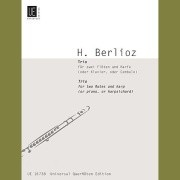

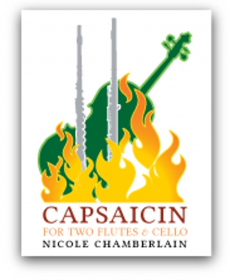
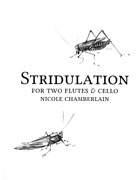

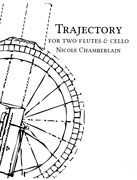

![Dubois, PM :: Les Treteaux [The Trestles]](http://www.flute4u.com/var/images/product/262.280/D005020679571187.jpg)





![Haydn, J :: Die Londoner Trios [The London Trios] Hob. IV: 1-4](http://www.flute4u.com/var/images/product/262.280/P/D009790006483532_d.jpg)

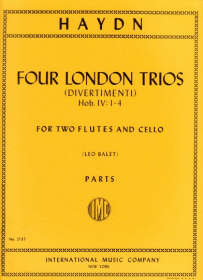



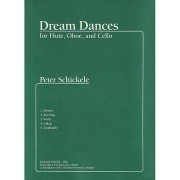


![Telemann, GP :: Quartett G dur [Quartet in G major]](http://www.flute4u.com/var/images/product/262.280/P/6000000000EP4562_d.jpg)
![Stamitz, C :: Drei Trios [Three Trios]](http://www.flute4u.com/var/images/product/262.280/P/6000000000BP0803_d.jpg)

